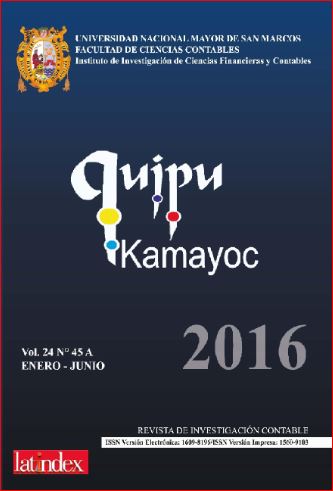PHILOSOPHY OF MATERIALITY - A MODEL FOR ITS DETERMINATION
DOI:
https://doi.org/10.15381/quipu.v24i45.12460Keywords:
Financial auditing, materiality, relative importance, auditing risk, International Standards on AuditingAbstract
This research found a gap in the knowledge of accounting science, and especially in the auditing related specifically to the criteria for determining materiality. Thus, it is intended to contribute to the theoretical knowledge of accounting science; and especially to the auditing doctrine, strengthening the implementation of International Standards of Accounting and Financial Reporting (IAS / IFRS). The theoretical knowledge will result in technological procedures applicable to the financial auditing practice.
It is unidentified whether auditing markets of the emerging economies have or lack, a clear criteria for that determination. We believe that the knowledge reported in this article- a summary of a research conducted by the author- is of great importance for these markets. Also, it will allow us to recognize the impact on auditing firms and independent auditors resulting on the benefit of the audited entities, representing more conceptual and theoretical knowledge about the auditing characteristics. By focusing the auditing under this perspective, we are expanding the scope and optimizing its tools to a higher level of organizations.
Downloads
Downloads
Published
Issue
Section
License
Copyright (c) 2016 Walter Adolfo Noles Monteblanco

This work is licensed under a Creative Commons Attribution-NonCommercial-ShareAlike 4.0 International License.
AUTHORS RETAIN THEIR RIGHTS:
a. Authors retain their trade mark rights and patent, and also on any process or procedure described in the article.
b. Authors retain their right to share, copy, distribute, perform and publicly communicate their article (eg, to place their article in an institutional repository or publish it in a book), with an acknowledgment of its initial publication in Quipukamayoc .
c. Authors retain theirs right to make a subsequent publication of their work, to use the article or any part thereof (eg a compilation of his papers, lecture notes, thesis, or a book), always indicating the source of publication (the originator of the work, journal, volume, number and date).





























